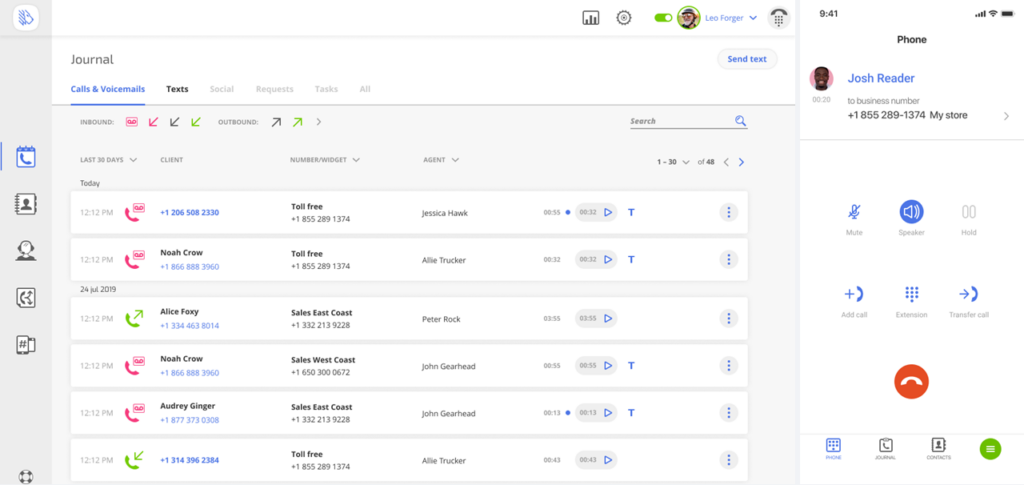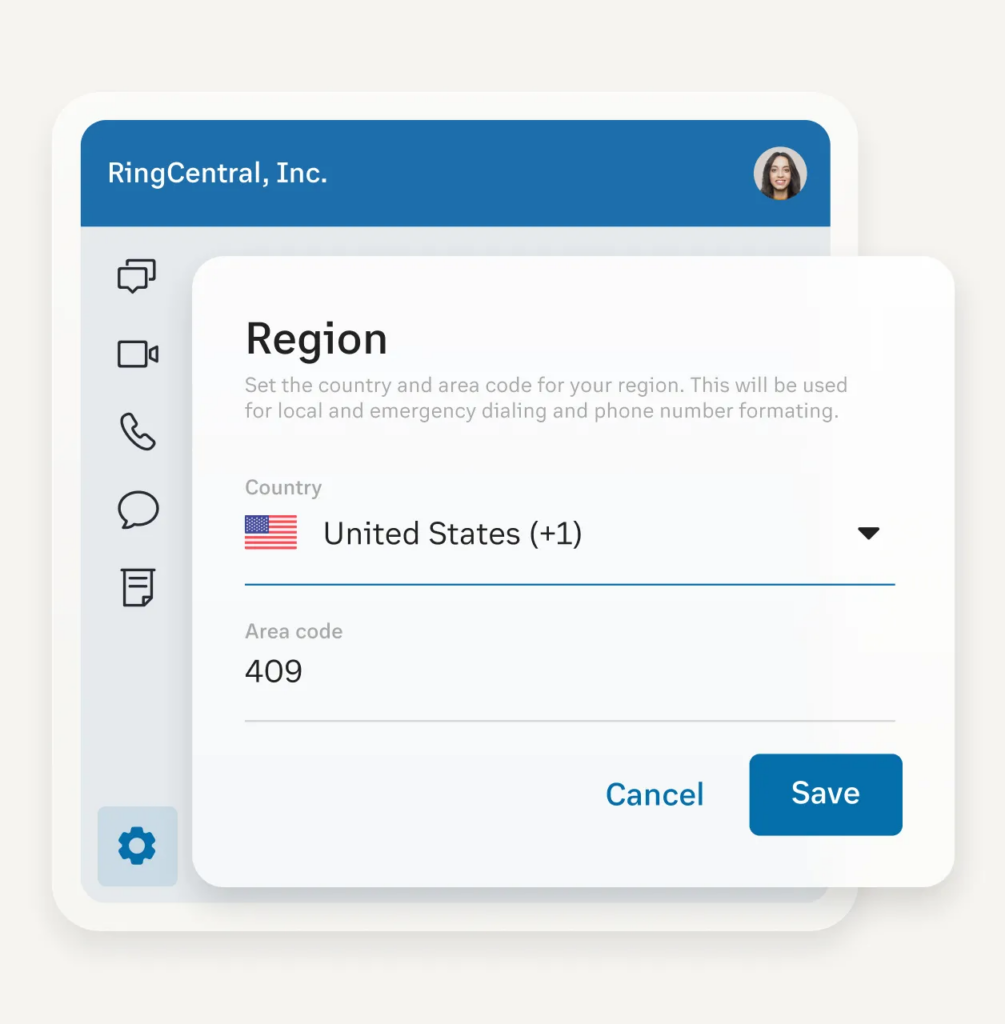Communication is crucial to growing a successful business, and a professional business number allows you to establish rapport, trust, and security between you and your customers. If you’re deciding between getting a toll-free vs a local number for your business, a local number boosts your local presence, while a toll-free number is great for setting up a nationwide presence or improving your image.
If you’re undecided about what type of number to choose and in need of a comprehensive toll-free vs local number comparison, our article will guide you on how to make an informed decision.
Toll-free vs Local Number at a Glance
Toll-free Number | Local Number | |
|---|---|---|
Best For | Businesses wanting to establish better credibility | Businesses wanting to establish a local presence in different localities |
Most Valuable For |
|
|
Key Benefits |
|
|
Geographical Reach | Makes it easier to reach businesses or numbers from different regions | Has a regional area code indicating a local presence |
Customer Cost | Free of charge for customers calling in | Free of charge for incoming and outgoing calls within the same region |
Portability | Calls can be forwarded to any phone, office, or extension | Must be changed if relocating to a different area |
When comparing a toll-free vs local number, the key difference is that the latter is linked to a distinct location and the former is not. Businesses with a local number will have an area code for the specific town or city, while a toll-free number’s location is not visible to the dialer. Lastly, the primary distinction of a local vs toll-free number for business is that toll-free numbers allow your customers to call you free of charge.
What Is a Toll-free Number?
A toll-free number, or what is also referred to as a freephone number, is a number with distinct three-digit prefix codes like 800 or 888 that can be dialed without charges to the person placing the call. Businesses use toll-free numbers so customers nationwide can easily connect with your business without worrying about calling charges. This builds your credibility and brand image by making you appear like an established company with a nationwide reach.
Types of Toll-free Numbers
There are two main types of toll-free numbers, and understanding how both work helps you choose which is better for you.
- Domestic toll-free numbers: These numbers are country-specific and can be called by anyone within the country using any device, including mobile phones, landlines, or payphones. This makes foreign businesses more accessible to local audiences.
- International toll-free numbers: Calls made to international toll-free numbers can be forwarded to another mobile number, landline, or voice-over-internet-protocol (VoIP) softphone, allowing businesses to overcome barriers like distance and time difference. Companies with customers in different geographic regions or countries commonly use these numbers.
Simply put, as you compare toll-free numbers vs local numbers, keep in mind that you’ll need to choose a type of toll-free number. International numbers strengthen brand image across borders, whereas a domestic toll-free number is country-specific, offering similar benefits offered by local area numbers.
Advantages of a Toll-free Number
In this toll-free number vs local number debate, toll-free numbers open businesses up to a wider, nationwide customer base. Toll-free numbers also increase customer accessibility and offer a free-to-call option for non-local customers. Read the points below to learn more about the benefits of toll-free numbers:
- Better brand image: Elevate your business’ appearance by looking as though you are a larger, more established company. Customers can always reach you for help, making you appear more professional.
- Enhanced customer support: Providing a toll-free number means people can call you free of charge. This means your customers and prospects can call you with inquiries without needing to worry about paying for anything.
- Improved portability: Take your toll-free numbers anywhere and offer a seamless experience for customers and remote workers. The Federal Communications Commission (FCC) requires that toll-free numbers are portable and can be moved to a new responsible organization (RespOrg) when changing service providers. Simply put, RespOrgs are responsible for the number porting process.
What Is a Local Number?
When comparing a toll-free vs local number, the latter’s three-digit prefix is not a standard 800 or 866 number. Instead, it has a three-digit local area code. It’s mainly used by companies wanting to communicate with customers within a specific region. Incoming calls made to a local phone number are not charged to the company, and only outgoing calls are billed.
Advantages of a Local Number
Local numbers make it easy for customers within an area to touch base with companies. Using a recognizable local number also appears more trustworthy to recipients and allows you to build a personal relationship with your target market. The reasons below illustrate why companies should consider getting local phone numbers:
- Quality, personalized service: Customer service is the lifeline of any business, and customers know that smaller companies offer more personalized experiences. This makes customers more inclined to patronize local businesses.
- Added credibility: Using a local phone number improves a company’s credibility within a local area, giving customers a sense of community and belonging. It’s an excellent strategy for regional businesses interested in developing a trusted local presence.
- Greater local advertising: Local phone numbers give businesses more legitimacy and create a strong brand image by allowing you to advertise in directories all throughout the community.
When to Use Toll-free Numbers
Toll-free numbers work best when serving a broad customer base and when you don’t have a single, defined location. It’s best for businesses expanding outside their current location, both nationally and internationally, because it creates a nationwide brand image. For example, using a toll-free number in all your ads and billboards offers a better recall rate and makes you appear more established.

MightyCall’s call and voicemail history (Source: MightyCall)
MightyCall’s toll-free numbers are a great solution for small businesses looking for customizable +1800 numbers to make their company more trustworthy. It also offers a user-friendly platform and customizable features like call forwarding and voicemail. MightyCall’s competitive pricing options for its 800 number service start at $15 per user, per month, making it a cost-effective option for businesses and startups with a limited budget.
While local numbers are great for specific areas, a toll-free number is excellent for scalability and reliability. Give your business the legitimacy it needs and receive calls from different regions. In addition, toll-free numbers are cloud-based, allowing you to link them to different teams and agents so there’s always someone to answer the call. This allows you to improve customer experience and build your brand.
When to Use Local Numbers
Use a local number to target customers in a certain area because customers like the idea of working with and supporting a home-grown, native establishment. People are more likely to answer calls from areas they recognize, and it makes your business feel local to residents in that area. It’s best to use local numbers for local advertising campaigns and areas where you have a high concentration of clients.

Use a local phone number to increase traffic and revenue within a specific location. (Source: RingCentral)
Establish your local presence using RingCentral’s available area codes. It lets customers choose from more than 200 area codes, allowing you to establish a virtual local presence. For greater brand recognition, set up a vanity number that’ll boost your local presence and build a steady stream of clientele from your target area.
When deciding between local vs toll-free numbers for marketing campaigns within a specific locality, include a local contact number in your collaterals and ads because most people like the thought of working with someone close by. In this case, while toll-free numbers help build credibility, they can also feel impersonal, so using a local number gives your business a friendly, neighborhood-like feeling. For example, a growing coffee shop brand can use local numbers for its branches because it’s a business that requires plenty of local patrons.
Best Business Phone Number Providers
There are several business phone number providers in the market, and finding the right solution is crucial to getting a full-featured and efficient phone system. The type of phone number you acquire must be aligned with your communication and marketing strategy and meet the demands of your client base. To help you find the right match for your business, here are some of the best business phone number solutions that cater to various business needs and budgets.
Business Phone Number Providers | Monthly Starting Price (per User) | Key Features | Learn More |
|---|---|---|---|
$30 |
| ||
 | $30.95 |
| |
 | $17 (Flat-rate) |
| |
 | $20 |
| |
 | $19.95 |
| |
Frequently Asked Questions (FAQs)
Yes, people calling an 800 toll-free number are not charged for the call. These numbers allow callers to get in touch with a business or individuals outside of the area without being charged long-distance fees. However, for the businesses using the number, the cost of the toll-free service depends on your calling plan. VoIP platforms often cost between $10 and $15 a month for a toll-free number.
No, your number does not need to match your registered address. VoIP phone systems often let users choose their own area code when selecting their business phone number.
Yes, providers often include one phone number in each account or for each user, but you can add additional toll-free or local phone numbers at any time. Prices for additional phone numbers vary per provider. For example, RingCentral charges $4.99 per additional number, per month, while additional numbers cost $10 per number, monthly.
Bottom Line
Your business number impacts how your business is viewed, and you must carefully consider which type of number—local vs toll-free—is best for you. Get a local number if you’re building and establishing a local presence, and use a toll-free number to make your business seem larger and more accessible. It’s best to consider your location and the type of customer you are looking to target when choosing between local vs toll-free numbers.